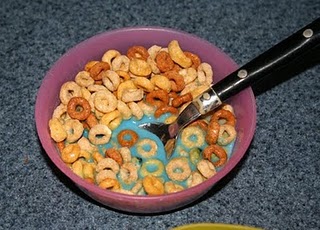4/1/11
This post was going to be about artificial sweeteners, but I'll need to save that topic until next time and give you the latest word on the FDA's decision about artificial colors during their recent hearings:
No warning labels will be on food packages at this time, but they agreed on more research. This sounds like a stalling tactic to me. If they'd just visit the Feingold Association's website, they'll have all the research they need to support a decision to put warning labels on packages, let alone ban that bad stuff.
Despite the lack of immediate gratification, I believe that these hearings and all the publicity are raising awareness of the negative side effects of these petroleum-based chemicals. While the FDA calls for more research, families across the country are taking charge of their own health ... and their success stories will support the formal, scientific studies yet to come.
Here is just one of these success stories, as told by Kim - an avid Feingold supporter who saw her child's out-of-sync behavior completely turn around within 2 days of removing the artificial colors from his diet.
Watch Kim's address to the FDA this week:
No warning labels will be on food packages at this time, but they agreed on more research. This sounds like a stalling tactic to me. If they'd just visit the Feingold Association's website, they'll have all the research they need to support a decision to put warning labels on packages, let alone ban that bad stuff.
Despite the lack of immediate gratification, I believe that these hearings and all the publicity are raising awareness of the negative side effects of these petroleum-based chemicals. While the FDA calls for more research, families across the country are taking charge of their own health ... and their success stories will support the formal, scientific studies yet to come.
Here is just one of these success stories, as told by Kim - an avid Feingold supporter who saw her child's out-of-sync behavior completely turn around within 2 days of removing the artificial colors from his diet.
Watch Kim's address to the FDA this week:
The Feingold Association is a volunteer-run organization that is funded by membership dollars. Your membership includes an extensive list of approved foods that you can purchase at most popular stores, and access to an online support forum, and more.
Please consider becoming a Feingold family. You'll be supporting your family's wellness, and helping the Feingold Association continue to be a leader in education about the effects of artificial ingredients on ourselves and our children.
For more information, visit www.feingold.org.
That's great stuff in .... great stuff out (tm) for ya
Next blog ... artificial sweeteners ... what I have to share isn't for the faint of heart.
Until next time, I bid you fare-well.
Smiles,
Ida Zelaya
sensory street(tm), inc.
(c) 2011 sensory street, inc. all rights reserved.
